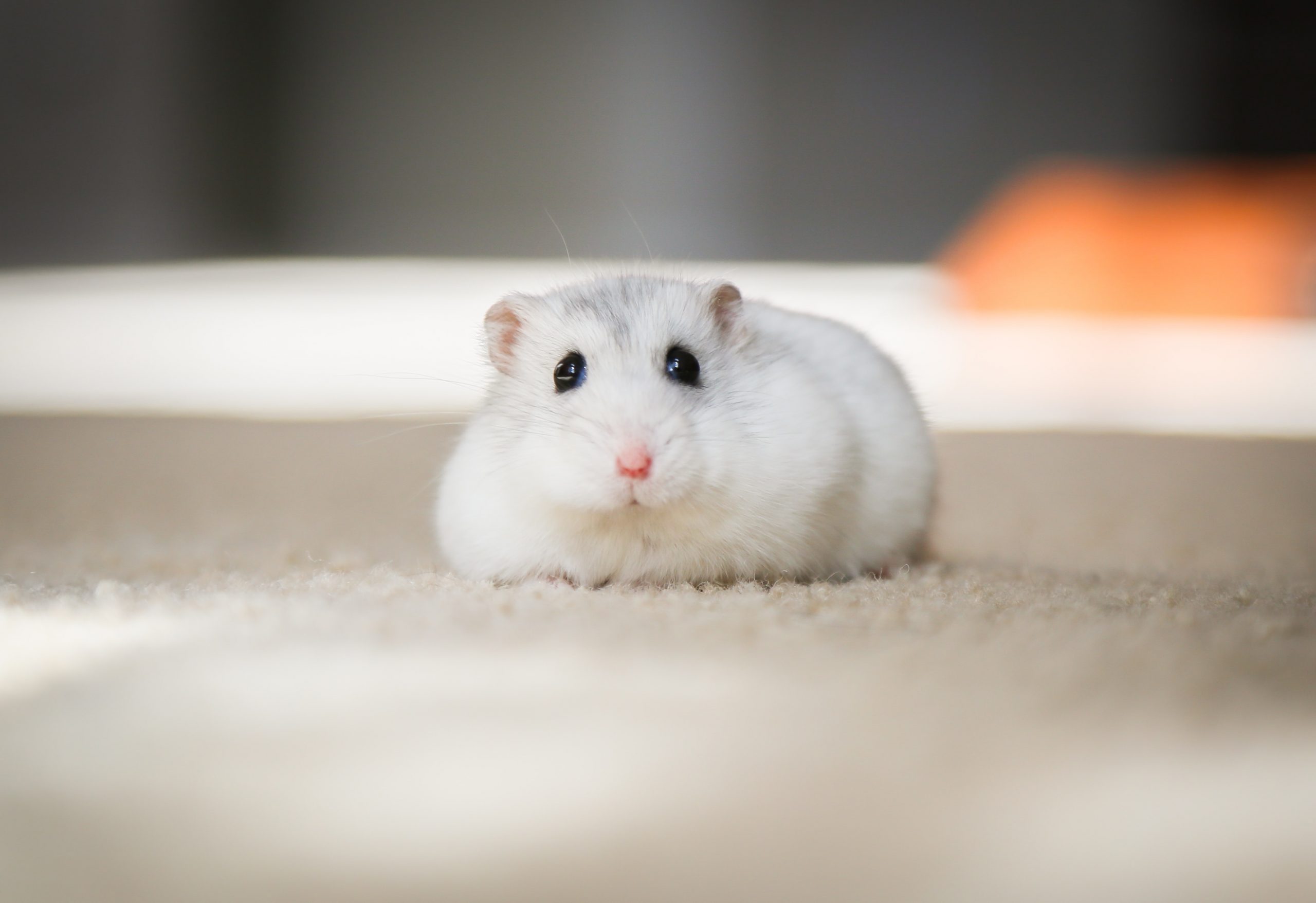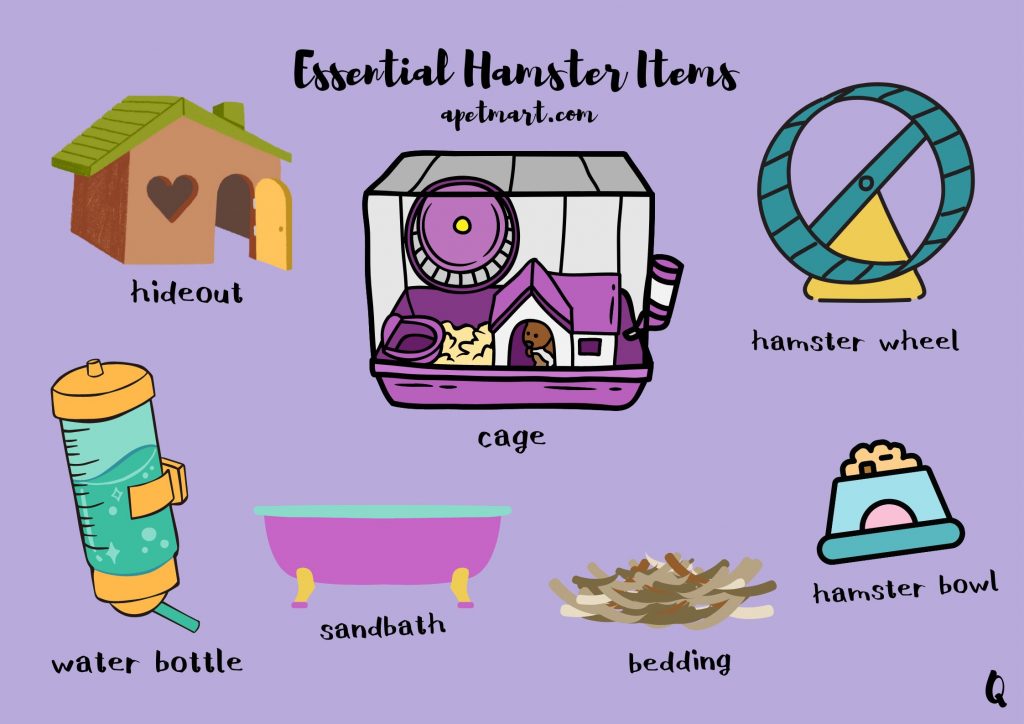
Hamsters are quite common as a starter household pet. They are easier to take care of compared to pets like dogs and cats. Thus, making them popular amongst people with children. There are many different breeds of hamsters and they differ in size. It is important to know your hamster breed to take care of them better.
Here are some basic hamster facts:
Life Span: 1.5 to 2 years
Size: 5 to 35 cm
Diet: Grain, seed and nuts
Before purchasing a hamster, you’ll need to prepare some essential items. By providing these items, you can minimise their stress when adjusting to a new home. Here are the essential items:
1. Cage
2. Bedding
3. Food
4. Food Bowl
5. Water Bottle
6. Hamster Wheel
7. Hideout
8. Toys
9. Sand Bath
Getting the Right Cage
Buy a cage that is escape-proof, easy to clean and big enough for your hamster. Cages with tubes can be fun for your hamster but they are hard to clean and have poor ventilation. Hamsters are extremely small and can fit through small spaces. Thus, find a cage that will not allow your hamster to escape. Remember to clean your hamster’s cage weekly!
As mentioned, hamsters come in different sizes. Thus, make sure to buy a cage that is large enough for your hamster. For instance, for a Syrian hamster, it is best to buy a larger cage. Here is an example:
For a Dwarf hamster, they can often squeeze through the bars of average-sized hamster cages. Therefore, it will be better to get a cage with smaller bars. Here is an example:
Prevue Pet Products
Bedding
There are different types of beddings for hamster cages. You need to choose the correct bedding as some can cause harm to your hamster.
- Aspen: safe bedding choice, provides odour control.
- Paper-based bedding: good for odour control (stick to non-scented options!
Avoid cedar and pine-wood chips as they produce an odour that can irritate your hamster’s respiratory system.
Hamster Food
Choose good quality food for your hamster. Pelleted foods are a better option than loose food mixes. With loose food mixes, your hamster may pick out what they like and leave those that they dislike, resulting in dietary imbalance or causing them to be overweight. You can feed your hamster with fresh vegetables as well. They should be fed once a day. Remember to remove those fresh foods that have not been consumed within a few hours.
Food Bowls & Water Bottle
Pick a food bowl that is small and shallow which doesn’t tip over easily. A great option would be ceramic or porcelain bowls as they are sturdy and not easily chewable. Choose a water bottle with stainless steel sprout and ball, as it keeps the cage clean and the water fresh.
Sand Bath
Sand baths can help deter skin parasites and remove grease from your hamster’s fur. You can provide your hamster with a sand bath to keep their fur clean and odourless. Purchase a container shallow enough for your hamster to go in and out and large enough to roll around. Pour the sand bath into the container and your hamster will go in to roll around!
Exercise
Hamsters enjoy running and they need their daily exercise. Thus, it is best to purchase an exercise wheel. The exercise wheel should have a solid surface for running. Avoid cross supports as they might get their legs caught. Choose a wheel that is quiet as they like to run at night.
Additionally, you can get toys for them to chew on or climb on. They can become bored without stimulation and exercise. When they are bored, they will chew on random things which can lead to them escaping.
Hideout
Hamsters would want a hideout. You can get them a half coconut shell or small clay plant pot to prevent them from chewing it up. Make sure their hideout does not have rough or sharp edges that can hurt them.
Healthcare
As hamsters are so small, if there is an issue, it can affect them quickly. Here are some symptoms to take note:
- Inactivity
- Not eating
- Diarrhoea
- Hair loss
- Sneezing
- Pneumonia
If you notice these symptoms, you might want to visit a vet.
































